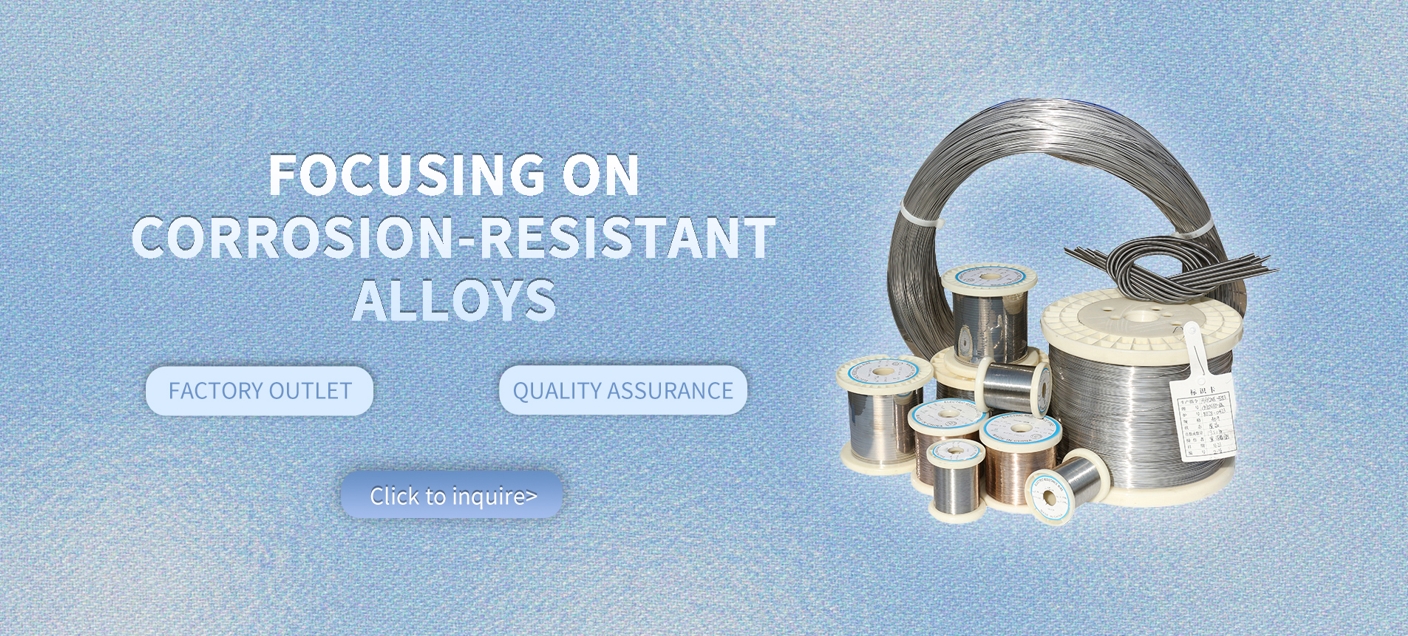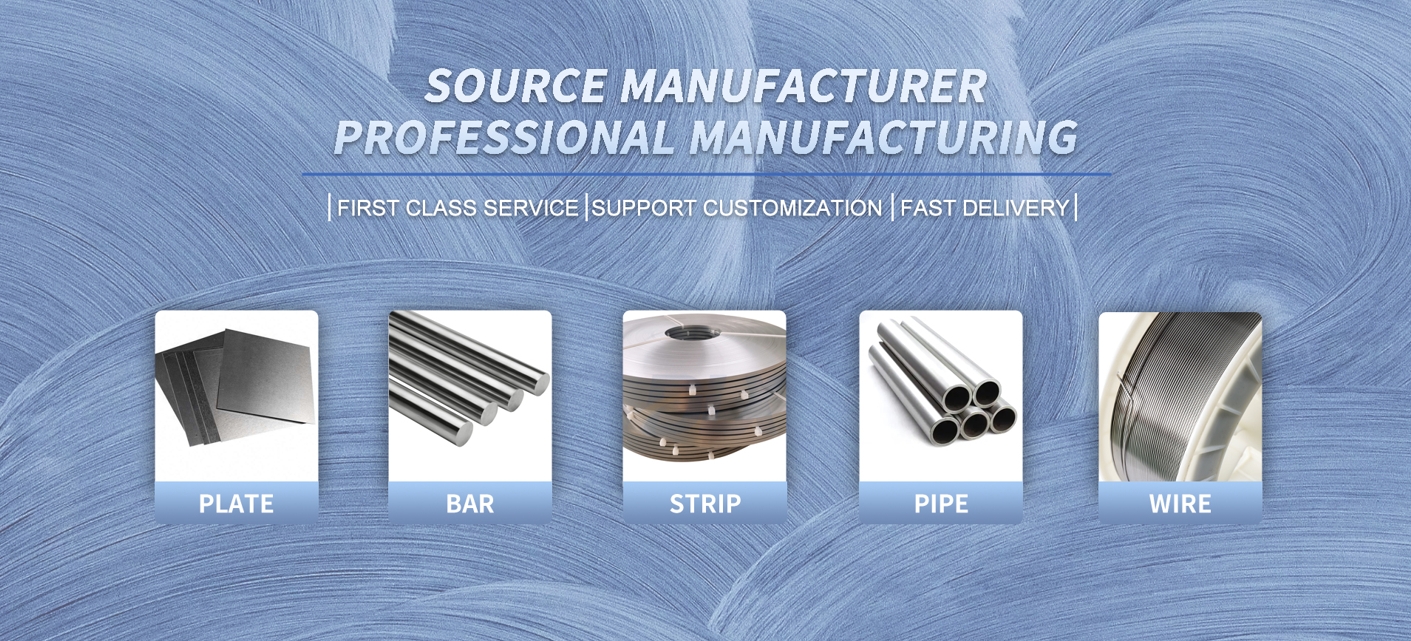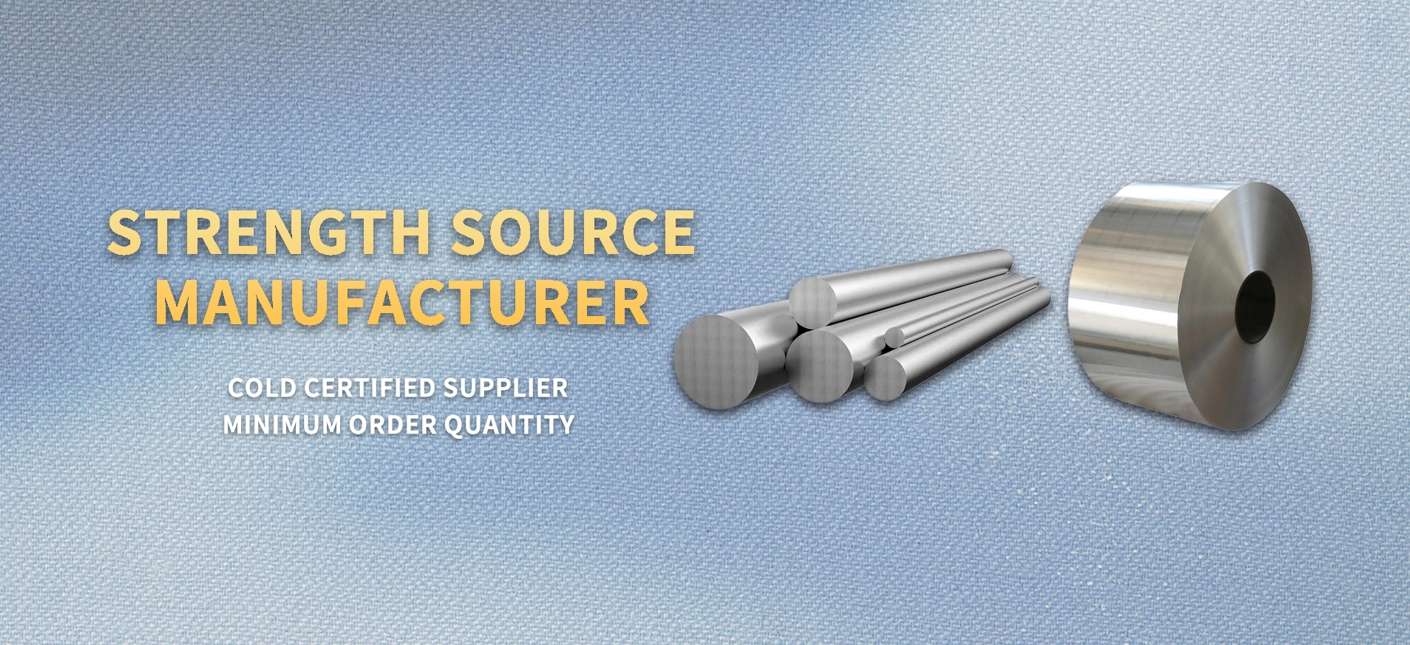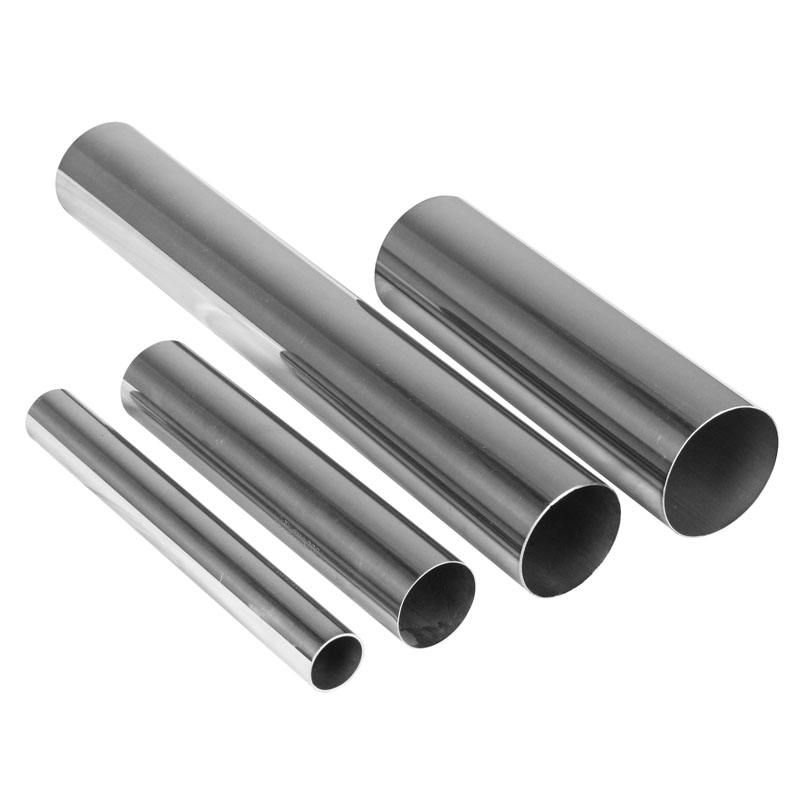Incoloy 825 Tube for Pollution Control System Acid-Resistant Piping

At our company, we focus on delivering high-quality Incoloy 825 tube that's perfect for pollution control system acid-resistant piping. If you're searching for a dependable Incoloy 825 tube supplier, we've got the expertise to provide solutions that stand up to tough environments. Our Incoloy 825 tube is all about reliability, making it a top choice for industries dealing with corrosive acids and harsh conditions.
Let's start with what our Incoloy 825 tube brings to the table. It's a nickel-iron-chromium alloy with key additions like molybdenum, copper, and titanium that make it super resistant to a wide range of corrosives. The composition—38-46% nickel for stress-cracking resistance, 19.5-23.5% chromium for oxidation protection, and 2.5-3.5% molybdenum plus 1.5-3% copper—creates a material that's tough against sulfuric and phosphoric acids, which are common in pollution control systems. Our tubes come in seamless or welded forms, with outer diameters from 6mm to 250mm and wall thicknesses starting at 0.5mm, all annealed for optimal performance. In acid-resistant piping, this tube forms a stable passive film that prevents pitting and crevice corrosion, even in chloride-heavy setups. We ensure every Incoloy 825 tube we produce meets ASTM B163/B423 standards, so you get consistent quality that lasts.
For more details, pls directly contact us.
Looking at the industry in 2025, things are moving fast, especially for materials like our Incoloy 825 tube in pollution control. The superalloys market is hitting $7.82 billion this year and is on track to reach $17.75 billion by 2032, growing at a solid 12.4% CAGR. For nickel alloys, we're seeing values climb to $20.24 billion by 2032, driven by demand in chemical and environmental sectors. Trends are all about stricter emission regulations, pushing for better pollution control systems that need acid-resistant piping to handle scrubber effluents and waste gases. With global focus on sustainability, industries are upgrading to materials that reduce leaks and downtime, and our Incoloy 825 tube fits right in. The nickel-based alloy tubes market is projected to grow at 4.6% CAGR, fueled by energy transitions and chemical processing expansions. In regions like Asia-Pacific, where industrialization is booming, demand for corrosion-resistant tubing in pollution control is surging. We're also noticing advancements in fabrication techniques, like improved welding for seamless integration, helping cut costs while maintaining performance.
Chemical Composition Requirement

Item | 800 | 800H | 800HT | 825 | 925 |
C | ≤0.1 | 0.05-0.1 | 0.06-0.1 | ≤0.05 | ≤0.03 |
Mn | ≤1.5 | ≤1.5 | ≤1.5 | ≤1 | ≤1 |
Fe | rest | rest | rest | rest | rest |
P | -- | -- | -- | ≤0.02 | ≤0.03 |
S | ≤0.015 | ≤0.015 | ≤0.015 | ≤0.03 | ≤0.03 |
Si | ≤1 | ≤1 | ≤1 | ≤0.5 | ≤0.5 |
Cu | ≤0.75 | ≤0.75 | ≤0.75 | 1.5-3 | 1.5-3 |
Ni | 30-35 | 30-35 | 30-35 | 38-46 | 42-46 |
Al | 0.15-0.6 | 0.15-0.6 | 0.15-0.6 | 0.2-1 | 0.15-0.5 |
Ti | 0.15-0.6 | 0.15-0.6 | 0.15-0.6 | 0.6-1.2 | 1.9-2.4 |
Cr | 19-23 | 19-23 | 19-23 | 19.5-23.5 | 19.5-23.5 |
Mo | -- | -- | -- | 2.5-3.5 | 2.5-3.5 |
Shape | Size (mm) |
Wire | 0.5-7.5 |
Rod/Bar | 8.0-200 |
Strip | (0.5-2.5)*(5-180) |
Tube/Pipe | Custom made |
Sheet/Plate | Custom made |
Product Form | Standard |
Rod, bar & Wire | ASTM B805 |
Plate, sheet & strip | ASTM B872 |
Seamless pipe and tube | ASTM B983 |
Forging | ASTM B637 |
For more details, pls directly contact us.
Applications for our Incoloy 825 tube are diverse, but it really excels in pollution control system acid-resistant piping. In flue gas desulfurization units, it's used for scrubber piping and ducts that handle sulfuric acid mists without degrading. Chemical plants rely on it for heat exchangers and evaporators dealing with phosphoric acid production, where its resistance to intergranular attacks keeps operations smooth. In the oil and gas sector, our tube goes into acid gas removal systems, resisting H2S and CO2 corrosives. Marine environments benefit from its seawater resistance in offshore pollution control setups, like waste treatment piping. Even in nuclear plants, it's in reprocessing equipment for nitric acid handling. What we appreciate is how easy it is to work with—good machinability, weldable without filler in many cases, and formable into complex shapes. Customers in pulp mills use our Incoloy 825 tube for digester and bleach plant lines, where chlorine dioxide won't cause cracking.
When you look at what sets us apart from typical suppliers, our advantages are clear. While others might offer standard tubing, we customize our Incoloy 825 tube with precise dimensions and enhanced heat treatments that boost its acid resistance even further. This means longer service life in pollution control systems, reducing your replacement costs by up to 25%. We source high-purity raw materials to minimize impurities, ensuring superior performance in aggressive acids—feedback from clients shows fewer failures in the field. Our inventory is deep, with quick turnaround times for orders, often shipping within days rather than weeks. Testing is rigorous: we check for corrosion rates in simulated environments, tensile strength at elevated temps, and ultrasonic integrity to guarantee every tube is flawless. Unlike basic options that might sensitize during welding, ours maintains stability, thanks to controlled titanium levels. We provide full support, from design consultations to post-installation checks, helping you optimize acid-resistant piping setups.
Mechanically, our Incoloy 825 tube delivers with 85 ksi tensile and 30 ksi yield, holding up under pressure without losing ductility. At temps up to 1000°F, it retains over 90% of room-temp strength, ideal for hot acid lines in pollution control. Corrosion tests show rates below 0.5 mpy in boiling phosphoric acid, and it passes ASTM G28 for intergranular resistance. This makes it a reliable choice for long-haul use.
Industry analysis points to challenges like raw material price fluctuations, but opportunities in green tech are huge. With superalloys expected to hit $7.85 billion in 2025 and grow to $14.75 billion by 2033, pollution control is a key driver, especially with new regs on SOx and NOx emissions. Trends include integrating smart sensors in piping for real-time monitoring, something our Incoloy 825 tube supports seamlessly. In Europe and North America, decarbonization pushes are boosting demand for durable materials in carbon capture systems.
In specific applications, like wet scrubbers, our tube handles lime slurry and acid gases without scaling. For fertilizer plants, it's in urea production lines resisting carbamate corrosion. Offshore, it endures saltwater in bilge systems tied to pollution control.
Comparison Parameters Table
| Property | Incoloy 825 | Incoloy 800 | Inconel 625 |
|---|---|---|---|
| UNS Designation | N08825 | N08800 | N06625 |
| Nickel Content (%) | 38-46 | 30-35 | 58 min |
| Chromium Content (%) | 19.5-23.5 | 19-23 | 20-23 |
| Molybdenum Content (%) | 2.5-3.5 | - | 8-10 |
| Copper Content (%) | 1.5-3 | - | - |
| Titanium Content (%) | 0.6-1.2 | 0.15-0.60 | 0.4 max |
| Tensile Strength (ksi) | 85 min (annealed) | 75-85 (annealed) | 120-140 (annealed) |
| Yield Strength (ksi) | 30-35 (annealed) | 30-40 (annealed) | 60-95 (annealed) |
| Elongation (%) | 30 | 30-43 | 30-50 |
| Max Service Temp (°F) | Up to 1000 | Up to 1100 | Up to 1800 |
| Corrosion Resistance | Excellent in acids, chlorides, pitting | Good oxidation, carburization | Superior in severe oxidizing, pitting |
| Typical Applications | Pollution control piping, chemical processing | Heat exchangers, furnace parts | Aerospace, marine, nuclear |
Our edge comes from innovation—we're exploring eco-coatings to enhance our Incoloy 825 tube's already top-notch resistance, aligning with 2025 sustainability trends. Stock variety means we cover seamless for high-pressure, welded for cost savings.
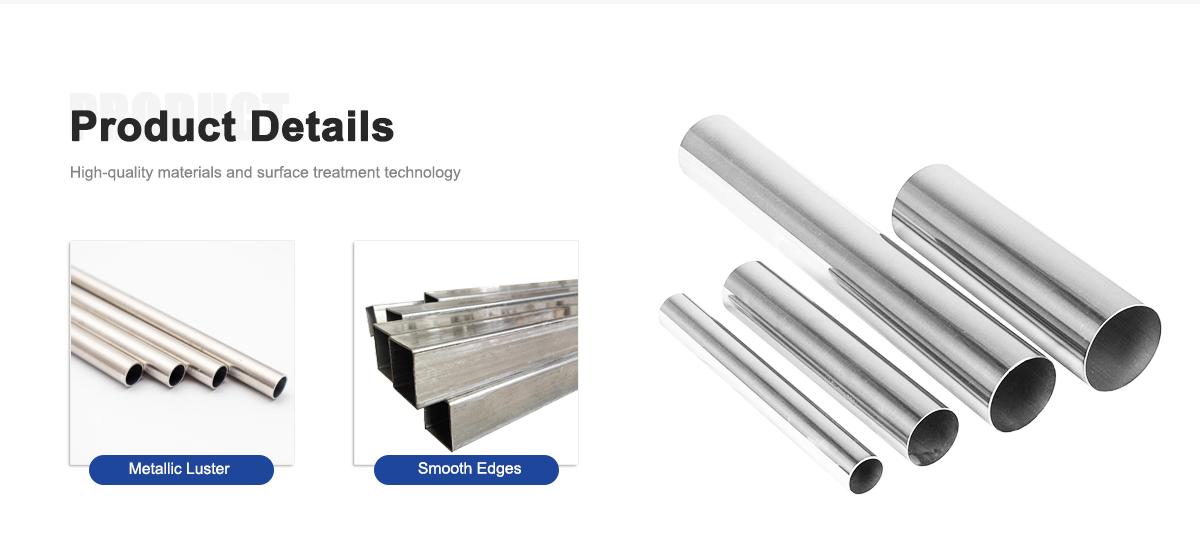

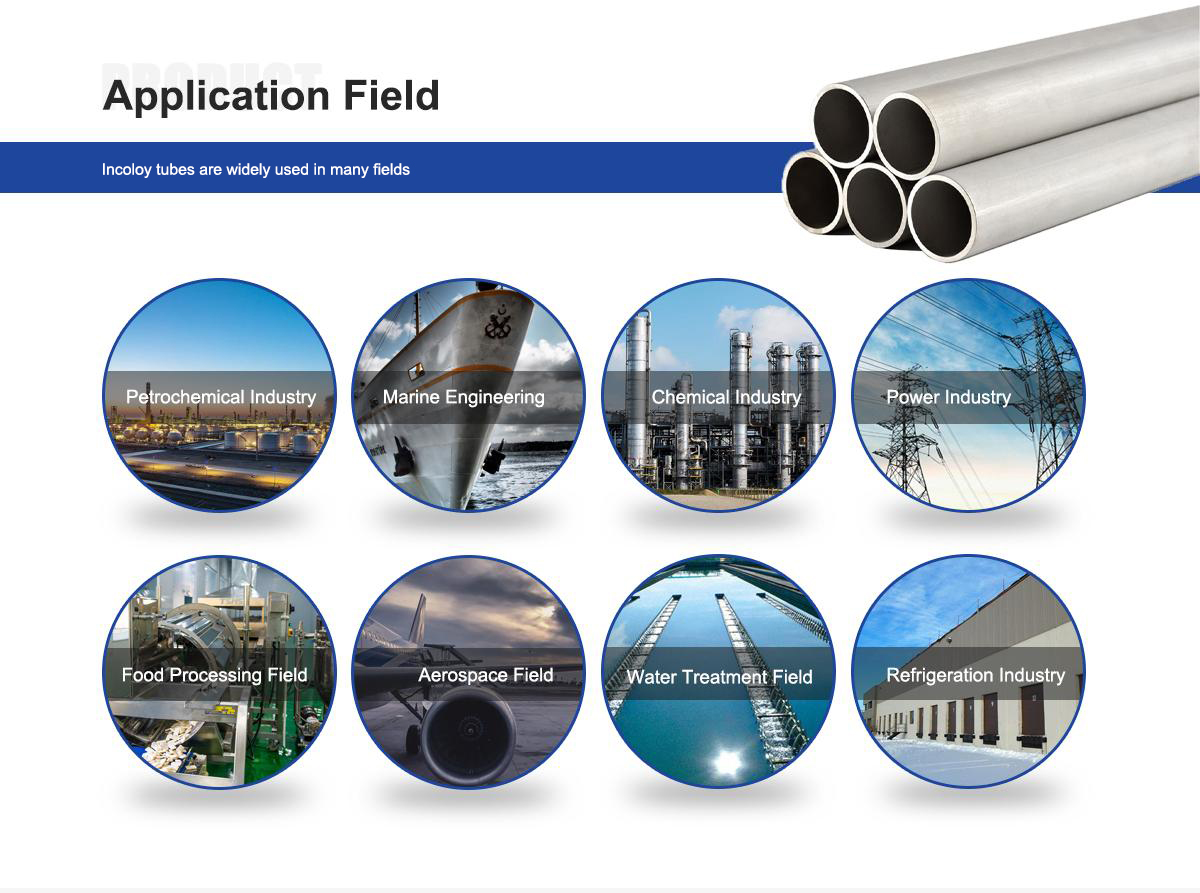
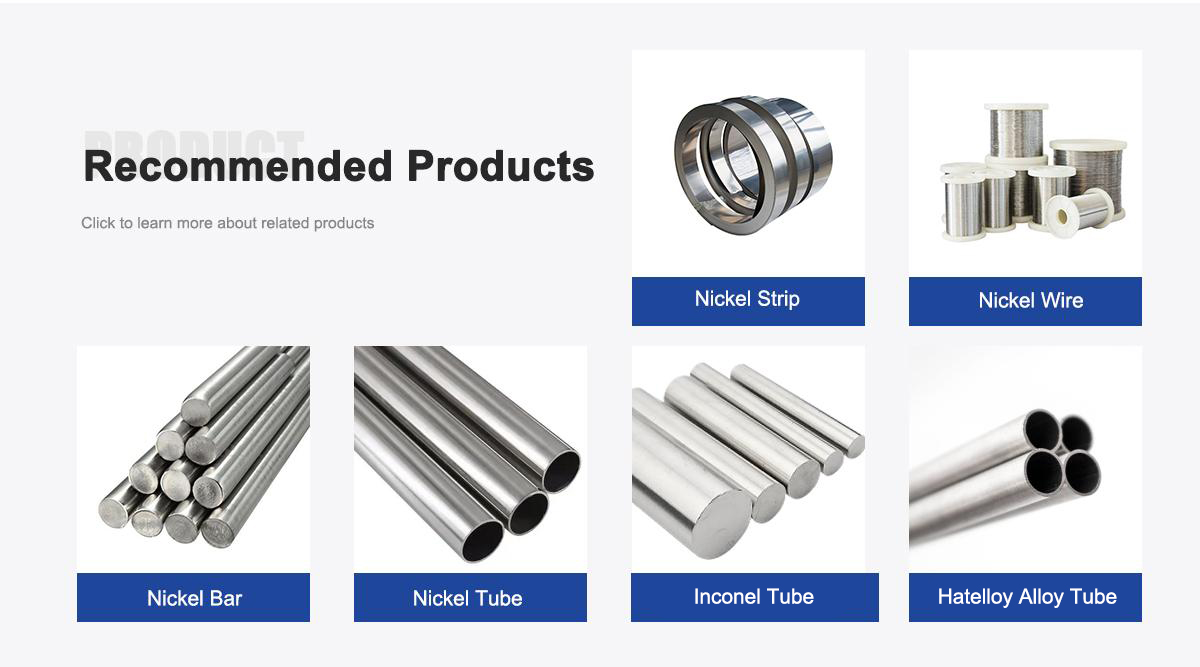
About Us:
Our 12,000㎡ factory is equipped with complete capabilities for research, production, testing, and packaging. We strictly adhere to ISO 9001 standards in our production processes, with an annual output of 1,200 tons. This ensures that we meet both quantity and quality demands. Furthermore, all products undergo rigorous simulated environment testing including high temperature, high pressure, and corrosion tests before being dispatched, ensuring they meet customer specifications.
For all our clients, we offer timely and multilingual after-sales support and technical consulting, helping you resolve any issues swiftly and efficiently.
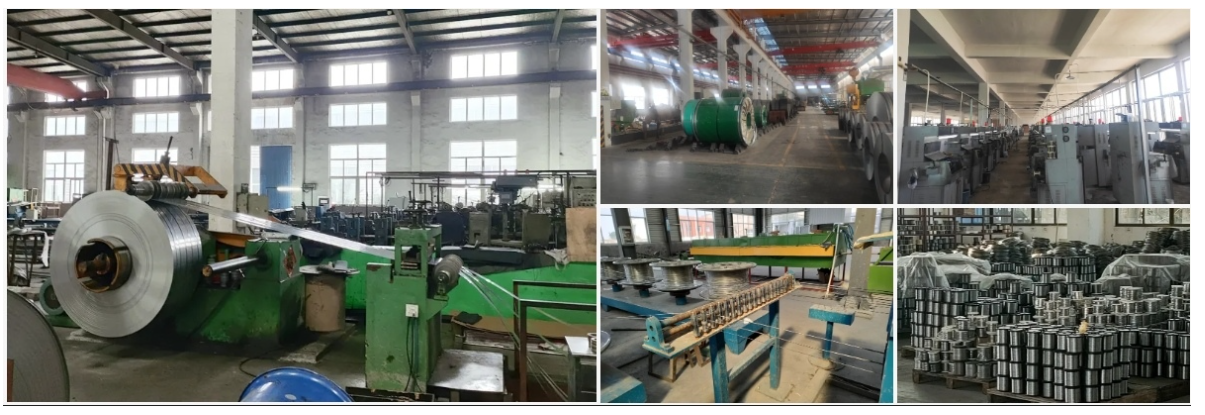
Client Visits
Building Stronger Partnerships
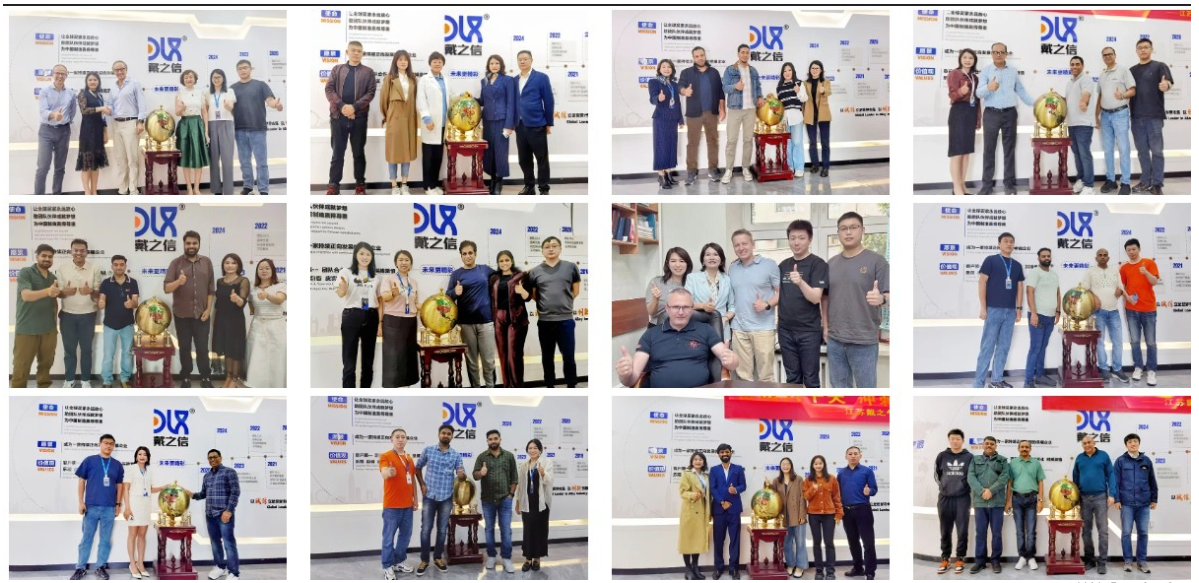
We support all kinds of testing:
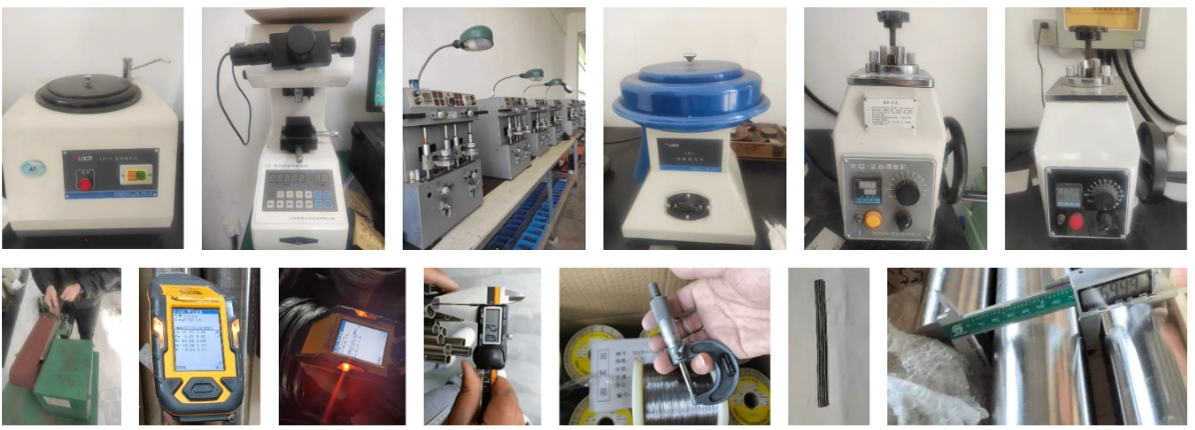
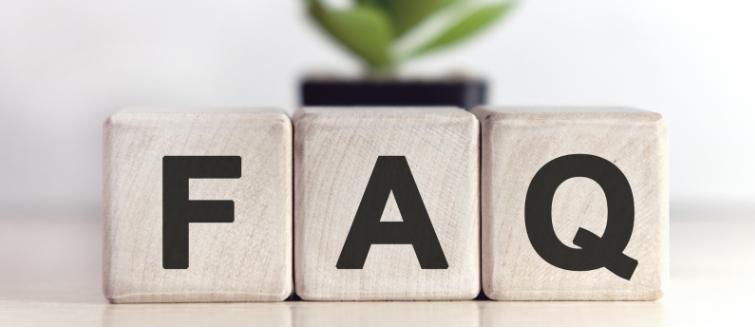
FAQs:
1. What is the chemical composition of Incoloy 825 tube?
Incoloy 825 tube consists of 38-46% nickel, 19.5-23.5% chromium, a minimum of 22% iron, 2.5-3.5% molybdenum, 1.5-3.0% copper, 0.6-1.2% titanium, up to 0.05% carbon, 1.0% manganese, 0.5% silicon, 0.2% aluminum, and 0.03% sulfur.
2. What are the key mechanical properties of Incoloy 825 tube?
Incoloy 825 tube offers a minimum tensile strength of 85 ksi, yield strength of 30-35 ksi, elongation of 30%, and maintains good ductility and toughness, with excellent weldability and formability for seamless or welded constructions.
3. How does Incoloy 825 tube resist corrosion?
Incoloy 825 tube provides outstanding resistance to pitting, crevice corrosion, intergranular corrosion, and stress-corrosion cracking in both reducing and oxidizing environments, including sulfuric, phosphoric, nitric acids, and chloride-containing media, due to its high nickel, chromium, molybdenum, and copper content.
4. What industries commonly use Incoloy 825 tube?
Incoloy 825 tube is commonly used in pollution control, chemical processing, oil and gas, marine, nuclear power, and pulp and paper industries where acid-resistant piping is required.
5. What are typical applications for Incoloy 825 tube?
Typical applications include acid-resistant piping in scrubbers, heat exchangers, evaporators, tanks, and ducting for pollution control systems, as well as in chemical plant tubing, pickling equipment, and offshore platforms.
6. What industry trends are influencing the use of Incoloy 825 tube in 2025?
In 2025, trends include growing demand in pollution control and renewable energy sectors, with the superalloy market expanding at 12.4% CAGR, driven by stricter environmental regulations, advancements in acid-resistant materials, and increased focus on sustainable chemical processing.
7. How does temperature affect the performance of Incoloy 825 tube?
Incoloy 825 tube performs well up to 1000°F in oxidizing atmospheres and 800°F in reducing ones, retaining corrosion resistance and mechanical strength, though prolonged exposure above 1200°F may lead to reduced toughness without affecting short-term use.
8. What makes Incoloy 825 tube suitable for long-term industrial use?
Its stable austenitic structure, resistance to sensitization and embrittlement, combined with high fatigue strength and low maintenance needs, ensure durability and reliability in aggressive acid environments over extended periods.
